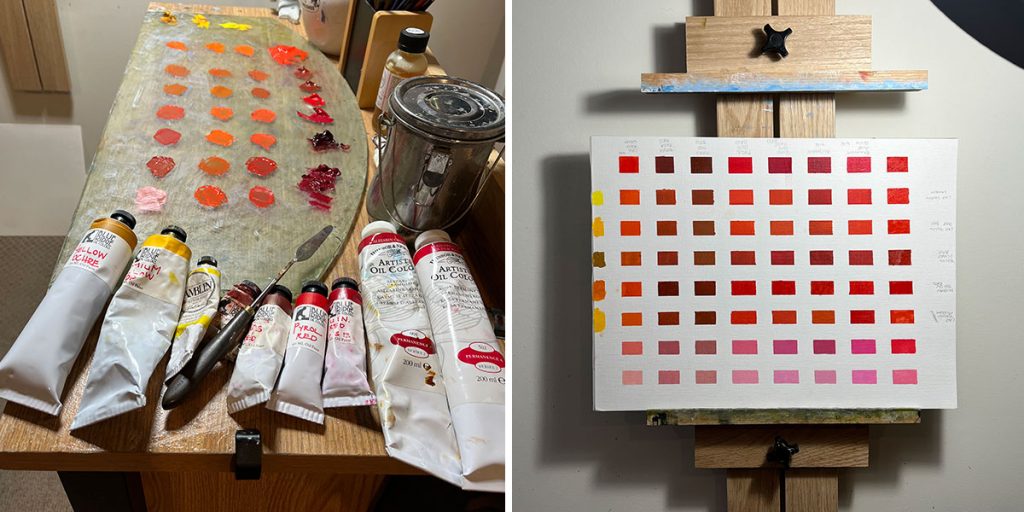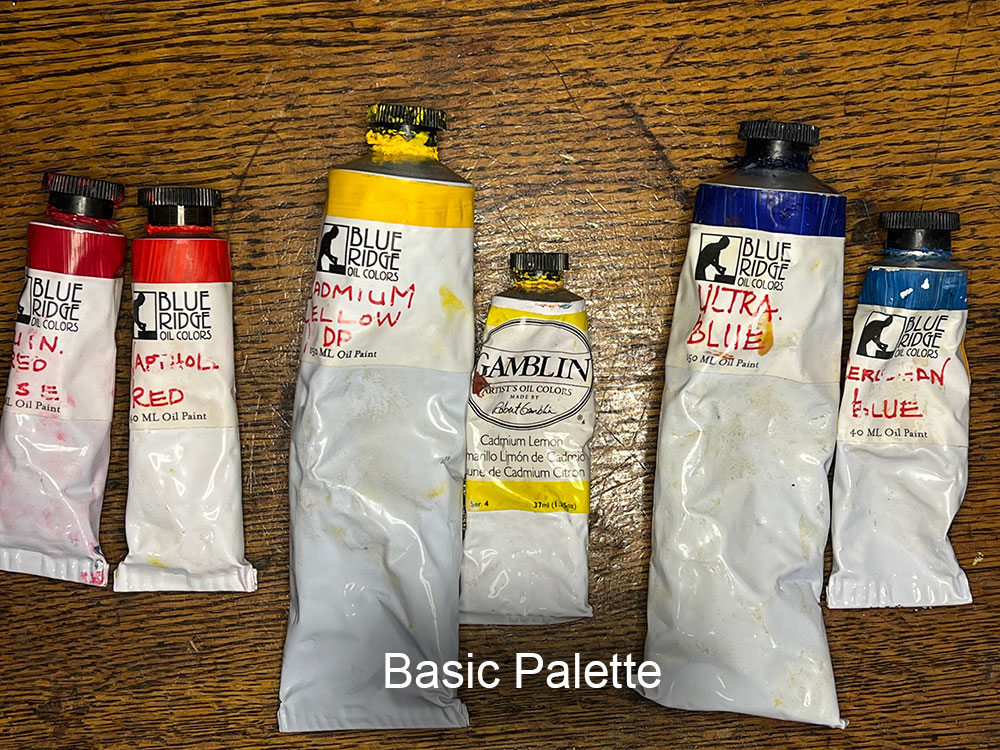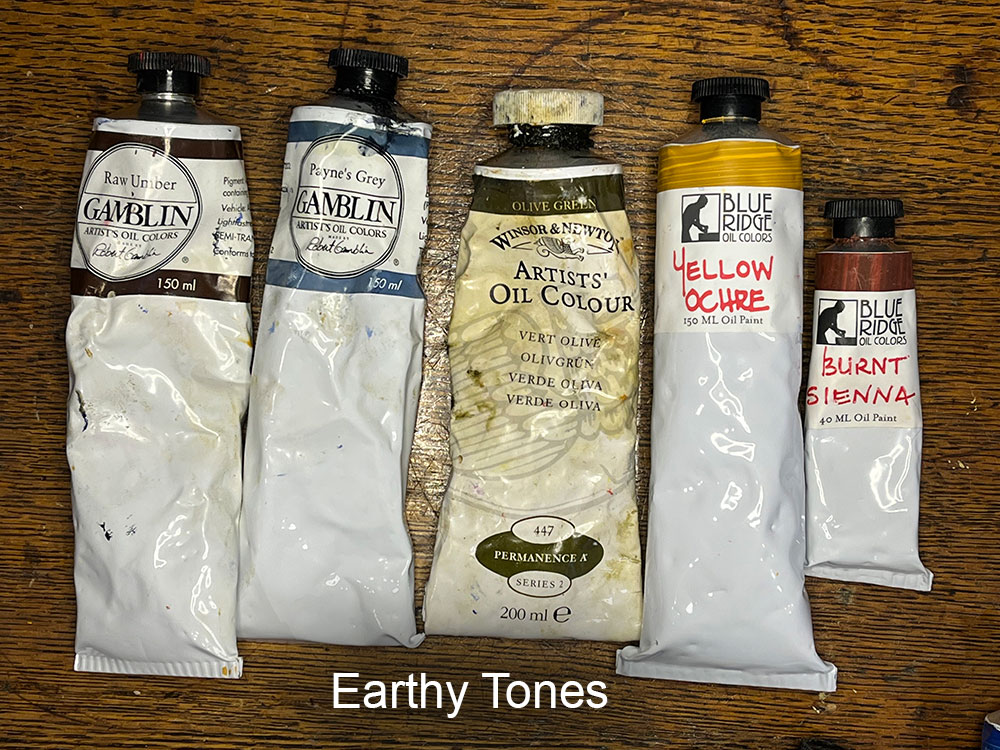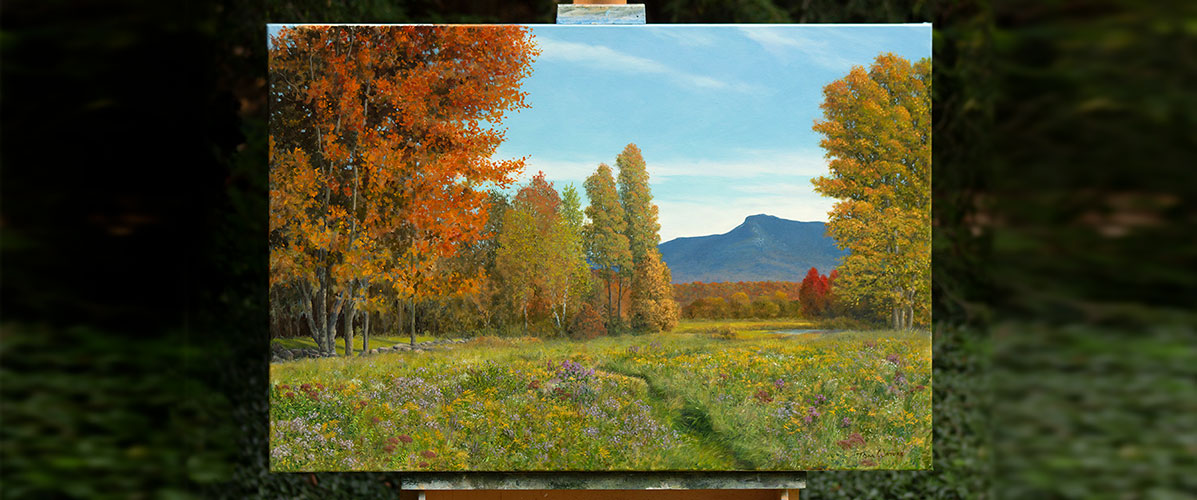
Simplifying My Palette!
Over the years I have amassed a collection of paints with a dizzying array of color choices. Increasingly I find this to be a distraction. Most artists have been told, or heard, that painting with a limited palette, especially when you start, brings great benefits as it forces you to observe closely and learn color mixing. Many experienced artists stick to a limited palette, sometimes as limited as one each of the three primaries (Red, Yellow, Blue) and white and black. A greater number choose to use a warm and a cool hue of each of the primaries.
I find I have come to rely too much on handy color choices that allow me to be lazy. One of the downfalls of having too many color choices is a loss of harmony. Not all color hues mix well or work well together. Relying on a new color can actually disrupt the rest of the painting. Not to mention the difficulty of keeping all those different colors stocked and on your palette.
So I am choosing to pare back the number of colors I rely on in different situations. I still don’t plan to go minimalist, and I have a few colors I have come to rely on and know their properties well, but I intend to use a fixed base palette of just a six colors, plus white and a deep grey, and a few earth tones. I will augment this with some reserve colors for when the situation calls for something not easily mixed from the base palette.
Reds!
Choosing which two reds to use on my base palette was the hardest choice. I have tried so many reds I can’t keep track of them all. So limiting reds to two, a warm and a cool, was a difficult challenge. In order to tackle it I created a color chart using several reds and some of the possible yellows I planned to choose from. The image below shows some of this process.

I have chosen Quinachridone Red Rose for my cool red. It mixes nicely with many yellows to give a strong orange, and nice purply-pink when lightened with white. For my warm red I have chosen Napthol Red, which is a strong tinting red. Both are semi-transparent. The choice of Napthol Red is in place of Cadmium Red, which is more opaque, but I hope to, over time, move away from the Cadmiums due to their health properties.
Base Palette
So here is my “Basic” palette.
Quinachridone Red Rose (cool red)
Napthol Red (warm red)
Cadmium Lemon (cool yellow)
Cadmium Yellow Deep (warm red)
Ultramarine Blue (warm blue)
Cerulean Blue (cool blue, situationally replaced with Cobalt Blue)

Added to the based palette of a warm and a cool primary color I have chosen an ‘earth tone’ color for each color group.
Burnt Sienna – this gives me a nice red-leaning shade that will mix well to create some good earthy browns and tone down some of the other reds.
Yellow Ochre – is a versatile yellow that I use a lot when mixing greens. When mixed with reds it also creates the nice rusty oranges that dominate the autumn landscape here in Vermont.
Paynes Grey – which is the closest color I have to black, has a dark blue undertone and is almost always my starting color for mixing my greens.
Olive Green – for a long time I did not have a green on my palette as I choose to mix my own from my other colors. However I have found this Olive Green from Winsor and Newton to be a versatile dark green that is very close to the greens in the landscape right out of the tube and that I can push in different directions. I can also mix it with red for a rich, warm dark color.
Raw Umber – I don’t know of anyone, unless they limit themselves to just three colors, that does not have Raw Umber on their palette. A versatile deep, opaque brown it is great for sketching on the canvas, bringing the tone down in ultramarine blue, and mixing neutral colors and grey. Raw Umber and Ultramarine Blue is my go-to mix for a deep black color.

Those 11 colors above, and white, are the ones I plan to rely on for the bulk of my painting, and will be the only ones I take with me when painting en-plein-air. However there are some colors which I have come to love in certain situations. These are my “Extended” or “Supplemental Palette”. These are not so much necessary colors as ones that are really nice to have in certain situations.
Continue reading “Color Overload”
